No More Evil Step-Mothers: Motherhood as Redemption for Female Fairy Tale Villains
Jackie Pinkowitz / University of Texas, Austin
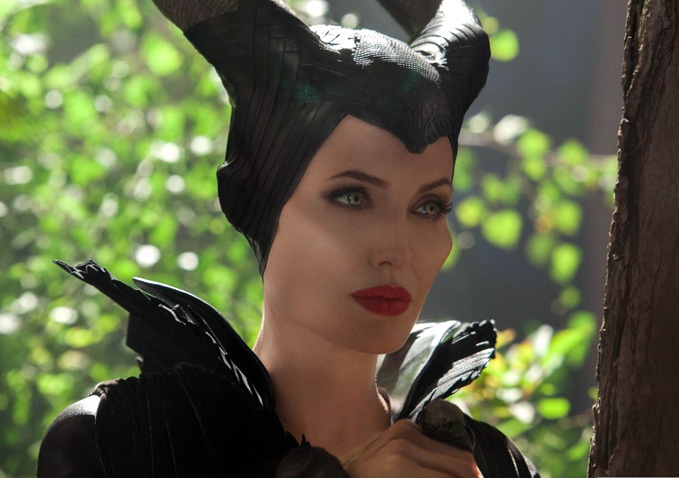
Amid Hollywood’s proliferation of narrative and franchise reboots, the trend of updating fairy tales has lately become one of the most popular and commercially successful. Recent Disney films, including the animated Tangled, Brave, and Frozen as well as the live-action Maleficent, overtly displace the conventional focus on the romantic union between the princess and her prince to foreground female-centered narratives which attempt to foster associations with female agency and empowerment. In an inverse of the traditional female rescue fantasy whose “happily ever after” results in marriage to a man, these updated fairy tales centralize active, precocious and headstrong girls who seek adventure and excitement and who take charge of their own heroic journeys.
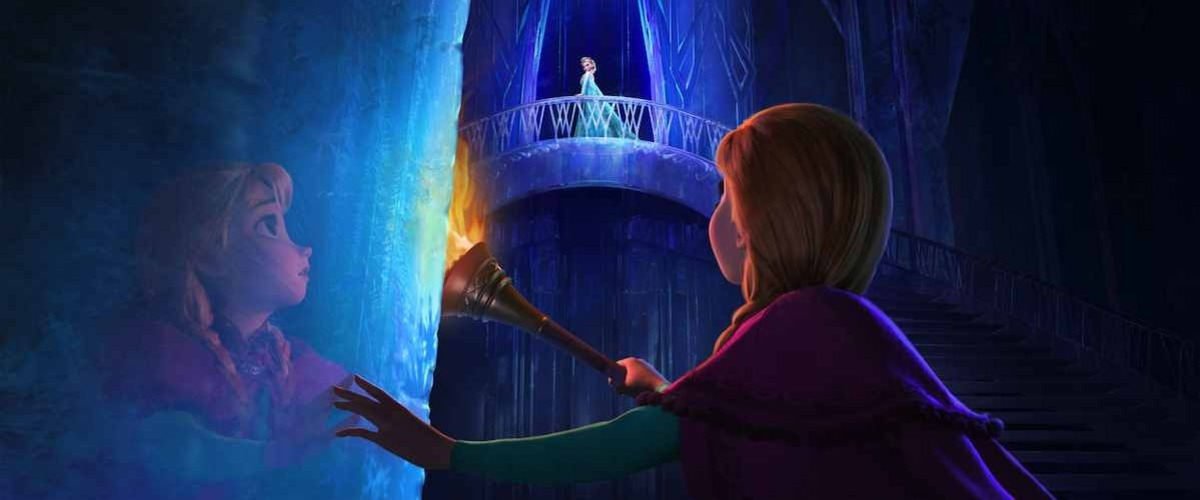
But what about female fairy tale villains, the wicked witches and evil step-mothers? For this recent return to classic fairy tales also encompasses the reimagination of iconic female villains, who are given their own back-stories and motivations; present in Frozen’s adaptation of The Snow Queen, this trend is most clearly visible in Maleficent and the ABC series Once Upon a Time, which is also owned, and shamelessly cross-promoted, by Disney. In an updating of Disney’s 1959 animated classic, Maleficent, Wicked-style, (re)tells the story of Sleeping Beauty from the perspective of the curse-casting evil fairy, played by Angelina Jolie; in this version, Maleficent is a beautiful and peaceful fairy before being driven to darkness and revenge by her childhood love, Stefan, who betrayed her and cut off her wings in order to be king. Similarly, Once Upon A Time (OUAT) centers its blended fairy tale narrative around Snow White’s Evil Queen, the archetypal wicked step-mother extraordinaire; Regina’s murderous envy of her step-daughter and the evil curse she casts are here justified by her own wicked mother, who murdered Regina’s fiancé to further her own plans of domination. Thus, these female villains no longer serve as one-dimensional embodiments of “evil” in starkly moral tales, but their “evil” deeds are justified through victimization and circumstance, their “evil” personas undone through the revelation of past goodness, which will ultimately become visible once more through the redemptive powers of motherhood.
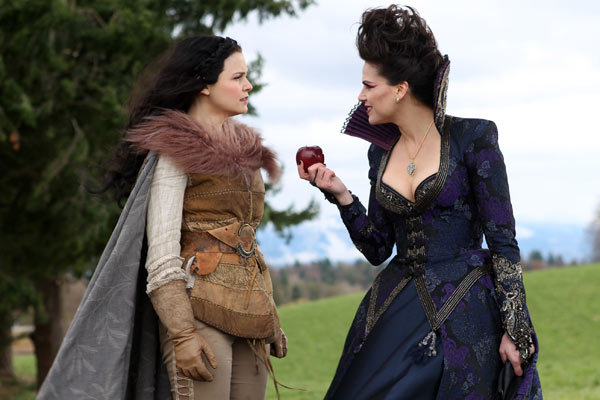
While these modern fairy tales advocate “active” women and displace female dependence on matrimonial romance and male rescue, they nonetheless continue to domesticate women, significantly circumscribing the “female empowerment” 1 they promise. Isolating their roles as women and their hopes for personal fulfillment within familial bounds, these narratives specifically limit female villains to and define them through their identities as mothers. For instance, in contrast to the animated classic, Maleficent here protectively watches over the young Aurora for sixteen years, coming to love the girl and serve as her “good” fairy god mother. In OUAT, Regina aggressively defines herself as a mother to her adopted son Henry, for whose benefit and protection she claims to be acting when she threatens, curses, and manipulates the people around her.
Not only are these fairy tale women centrally defined by their roles and identities as mothers, but they are also fully redeemed by, and their not-inconsiderable powers comfortably reframed around, their expressions of motherly love and devotion. Considering the popular trend of narratives foregrounding dark male anti-heroes, which ask audiences to identify with men of dubious morals, self-destructive tendencies, staggering pride, and an inexhaustive hunger for power and control, these “villainous” women, ultimately redeemed by motherhood, are a far cry from men like Francis Underwood, Don Draper, and Walter White. While today’s male anti-heroes are allowed to exist and even revel in their flawed complexity and villainy (House of Cards’ Underwood is rewarded for murder, betrayal, and destructive self-interest with the presidency of the United States), modern female fairy tale “villains” are destined only to redemption and salvation through motherhood.
Proving this redemptive quality of motherhood, these updated tales’ iconic “true love’s kiss” is no longer between prince and princess, but between mother and child. It is Maleficent’s own admission of motherly devotion and her kiss on Aurora’s forehead which awakens the girl, allows her to live as her daughter, and restores peace to the kingdoms. In OUAT, Henry’s birth mother, Emma, breaks Regina’s curse through love’s true kiss, which comes when she takes responsibility for the son she gave up for adoption and decides to become a caring, maternal part of his life. And in a striking parallel two seasons later, Regina finally abandons her wicked ways to become the town’s savior and the mom Henry always wanted her to be, breaking the curse of an evil sorceress when she kisses her son with “true love’s kiss.”
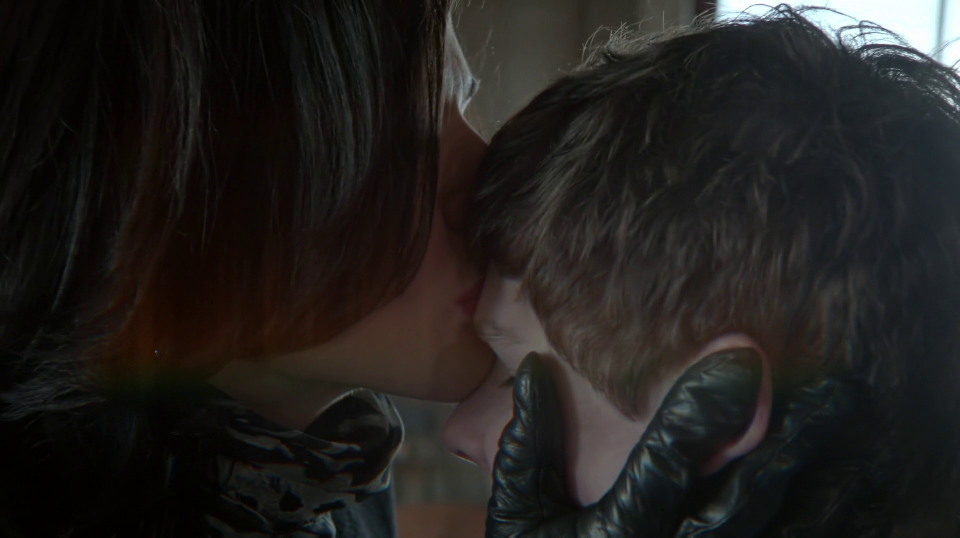
While this revision of true love’s kiss offers another way for Disney to modernize its outdated fairy tales and woo new female audiences by emphasizing familial and female bonds, the redemption of “evil” women through motherhood ultimately works to strip Regina and especially Maleficent of much of their potential complexity and the transformative possibilities of their “villainous” femininity. Furthermore, it reveals their “evil-ness” to have been merely the product of thwarted heterosexual love; their true nature, as caring, virtuous, and maternal women, becomes revealed and (re)asserted through their selfless acts as mothers. Therefore, these updated tales provide no fundamental revision of the classic stories in which good wins out, evil is vanquished, and women with traditionally feminine characteristics and “virtues” are allowed to live “happily ever after.”
Additionally, in their motherhood-as-redemption motifs, these new fairy tales further reinscribe what Susan Douglas and Meredith Michaels call the “new momism” of the early 21st century, a myth which insists that “no woman is truly complete or fulfilled unless she has kids, that women remain the best primary caretakers of children, and that to be a remotely decent mother, a woman has to devote her entire physical, psychological, and emotional, and intellectual being, 24/7, to her children.”2 This “new momism” perpetuates a romanticized and unattainable standard of feminine and maternal perfection, which has become further implicated in and exacerbated by female celebrities, so-called “yummy mummies” and “supermoms.”3 Ann C. Hall and Mardia J. Bishop describe these mythic “supermoms” as the mothers who seem able to “do it all, with a smile, with a perfect figure, and on a budget.”4
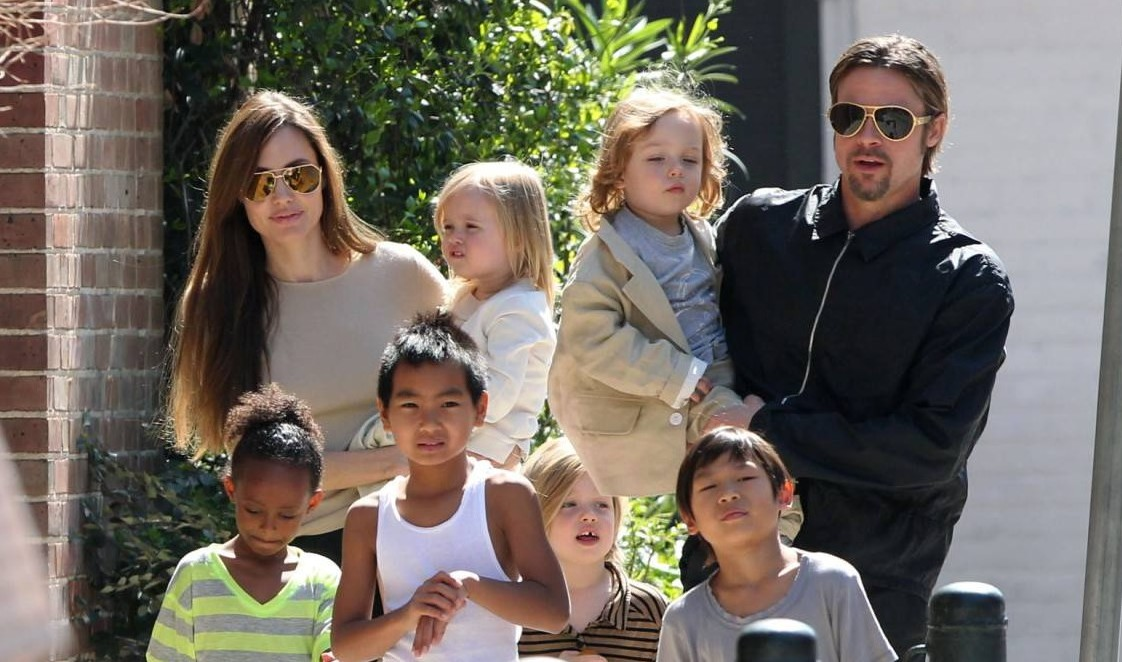
Angelina Jolie herself epitomizes this fantastical figure of the “supermom,” having been christened “Momgelina” in the tabloids for her ability to juggle a global film career, international humanitarian aid, and six children while still looking beautiful.5 This collapse of Jolie’s personal identity with her role as a mother perpetuates the myth of the glamorous, multi-tasking “supermom” while also mirroring the romanticized and utopic vision of motherhood which updated fairy tales like Maleficent advocate. Jolie’s daughter Vivienne was even cast in the film as the young Aurora, cementing the connection between the onscreen fairy tale and the real-life “super” mom as well as the maternal virtue of the new female “villain.”
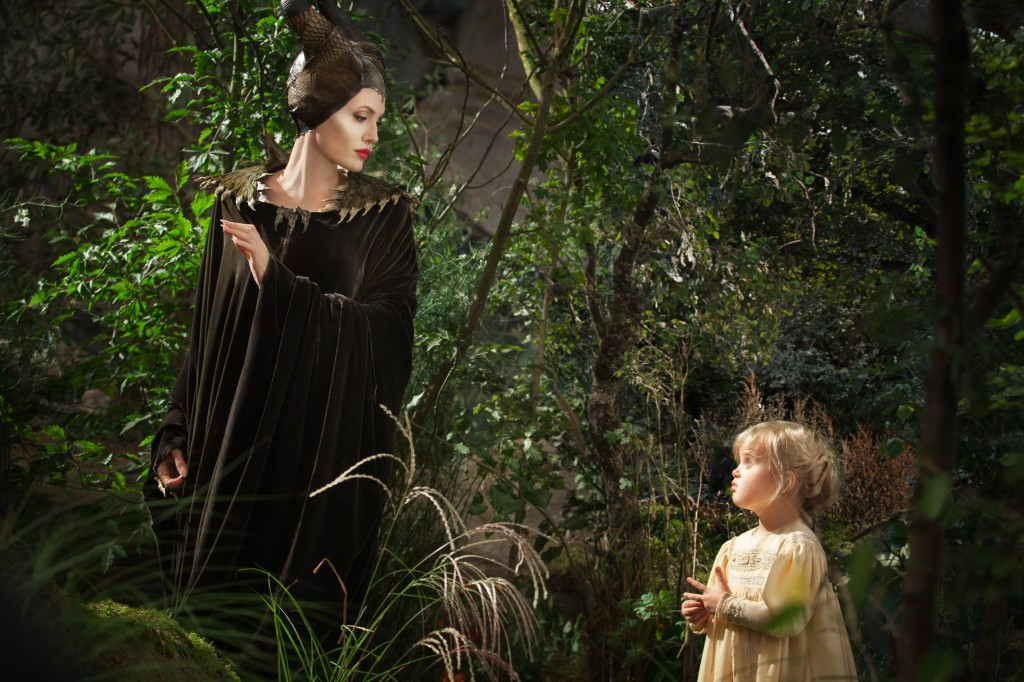
Like the Disney villain she plays, Jolie’s own star image is marked by this motherhood-as-redemption narrative: starting with the adoption of her first son from Cambodia and continuing through the adoption and birth of five more children with partner Brad Pitt, she transformed, and redeemed, herself from the rebellious “bad girl,” known for kissing her brother and wearing vials of husband Billy Bob Thornton’s blood, to the figure of a global mother to the children of the world, a noble and maternal international humanitarian aid worker.6
While I am not attempting in any way to diminish the power or pleasure of motherhood for women, it is important to critically consider the ways in which the concept of motherhood is currently being constructed and utilized to redeem and “make good” women whom society has viewed as evil or threatening, to re-narrativize their independence and power within the traditional virtues of motherhood, and to promote the romanticized myth of motherhood as (the only kind of) personal and worldly success and salvation. This is especially important considering the new generation of young girls who will grow up watching these new fairy tales and identifying with their more active female protagonists, and whose own agency might ultimately be circumscribed by their romantic valorization of motherhood.
Image Credits:
1. Angelina Jolie as Maleficent
2. Anna and Elsa take the lead in Frozen
3. Reimagining Snow White and the Evil Queen in Once Upon A Time
4. Redemptive “true love’s kiss” between “villainous” mother and child on Once Upon a Time
5. Angelina Jolie as “supermom” Momgelina
6. Jolie and her daughter Vivienne in Maleficent: the myth of motherhood onscreen and off
Please feel free to comment.
- Sharkey, Betsy. “Review: Angelina Jolie is Wickedly Good in the Not-Quite-So Classic Maleficent.” Los Angeles Times 29 May 2014. Latimes.com. http://www.latimes.com/entertainment/movies/la-et-mn-maleficent-review-20140530-column.html. Duralde, Alonso. “’Maleficent’ Review: Angelina Jolie Helps Flip the Script, ‘Wicked’-Style.” Thewrap.com. 28 May 2014. http://www.thewrap.com/maleficent-review-angelina-jolie/. [↩]
- Douglas, Susan and Meredith Michaels. The Mommy Myth: The Idealization of Motherhood and How it Has Undermined All Women. New York: Free Press, 2004. 4. [↩]
- For more on “yummy mummies,” see Nicola Pitt, “Yummy Mummies”: Angelina Jolie and Early 21st Century Representations of Mothering.” Re—Imagining Sociology: The Annual Conference of the Australian Sociological Association. Part of Refereed Conference Proceedings: Australian Sociological Association. 2008. http://www.tasa.org.au/uploads/2011/05/Pitt-Nicola-Session-10-PDF.pdf
And McRobbie, Angela. “Yummy mummies leave a bad taste for young women.” The Guardian 2 March 2006. http://www.guardian.co.uk/world/2006/mar/02/gender.comment [↩] - Hall, Ann C. and Mardia J. Bishop. Mommy Angst: Motherhood in American Popular Culture. Connecticut: Greenwood Publishing Group, 2009. ix. [↩]
- Urbandictionary.com defines “Momgelina” as “a mother that possesses the abilities to juggle several different seemingly impossible tasks at any given time, all the while looking absolutely amazing doing so.” “Momgelina.” Ubrandictionary.com. http://www.urbandictionary.com/define.php?term=Momgelina. [↩]
- Podnieks, Elizabeth. “’The Bump is Back’: Celebrity Moms, Entertainment Journalism, and the ‘Media Mother Police.’” Mediating Moms: Mothers in Popular Culture. Ed. Elizabeth Podnieks. Montreal: McGill-Queens University Press, 2012. 87-107. 91-94. [↩]
Not only are these fairy tale women centrally defined by their roles and identities as mothers, but they are also fully redeemed by, and their not-inconsiderable powers comfortably reframed around, their expressions of motherly love and devotion. Thank you!